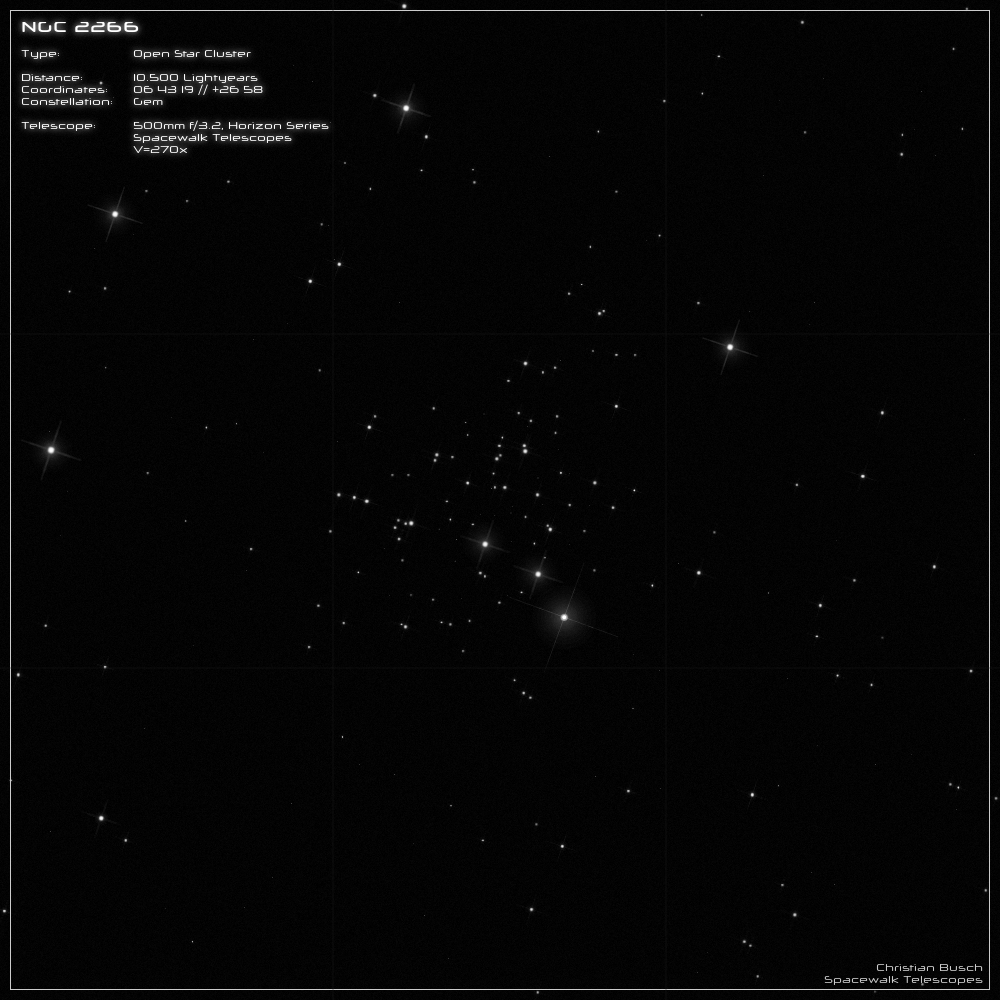NGC 2266, Offener Sternhaufen
NGC 2266 is an open star cluster in the constellation Gemini, located about 10,500 light-years from Earth. It has an apparent magnitude of 9.5mag
and a size of 5.0'. The cluster was discovered in December 1785 by F.W. Herschel.
The cluster has a total brightness of 9.5mag, which corresponds to an absolute magnitude of M= -3.0mag or 1,400 suns. The core has a true diameter
of 3.1 light-years, but the stars are gravitationally bound to the cluster up to a radius of 8 light-years. The total mass is 1,390 solar masses, with the
core accounting for 170 solar masses. Looking at the "Radial Density Profile", the stellar density increases strongly towards the center - much more
than for example in NGC 884. The age of NGC 2266 is given with 630 to 950 million years, but values of 1.2 billion years can also be found.
The "turnoff point" is 1.93 solar masses and in total 12 highly evolved stars are found in the cluster. The most luminous star is m=11.1mag bright, which
corresponds to an absolute magnitude of M= -1.4mag or 320 suns.
----------------------------------------------------------------------------------------------------------------------------------------------
At V=120x the star cluster NGC 2266 appears wonderfully resolved in my 20 inch telescope.
But it is most beautiful at a magnification of 270x, when the sky background becomes pitch black and the individual stars sparkle like fine diamonds. There
are about 70-80 stars with different magnitudes to be seen. A very bright star in the south stands out, but it is not part of the cluster. The cluster is moderately
concentrated and stands out very well from the surrounding starfield. The edges are sharply defined and the overall shape is slightly triangular.
A beautiful object for cold winter nights!

